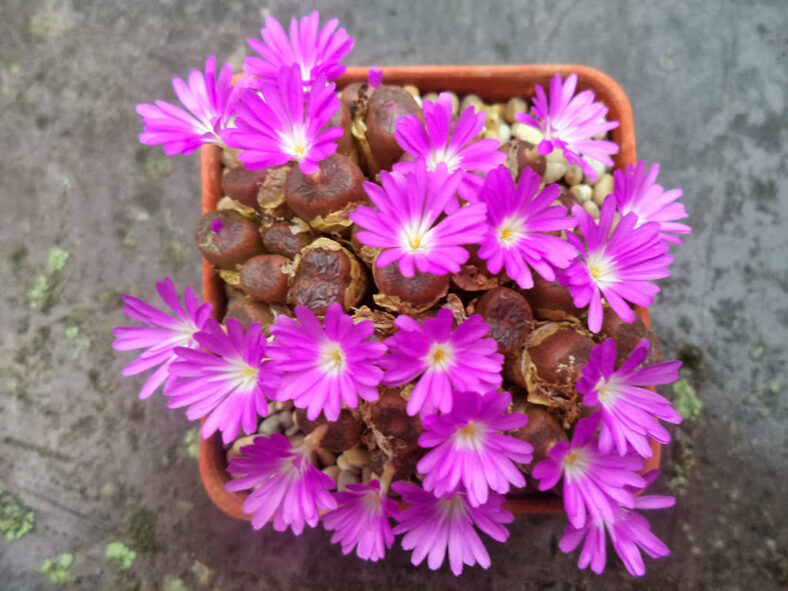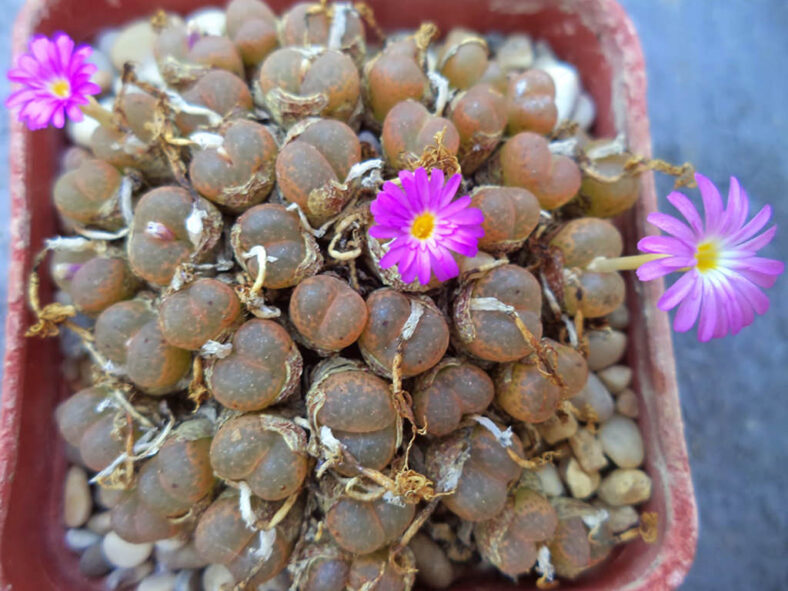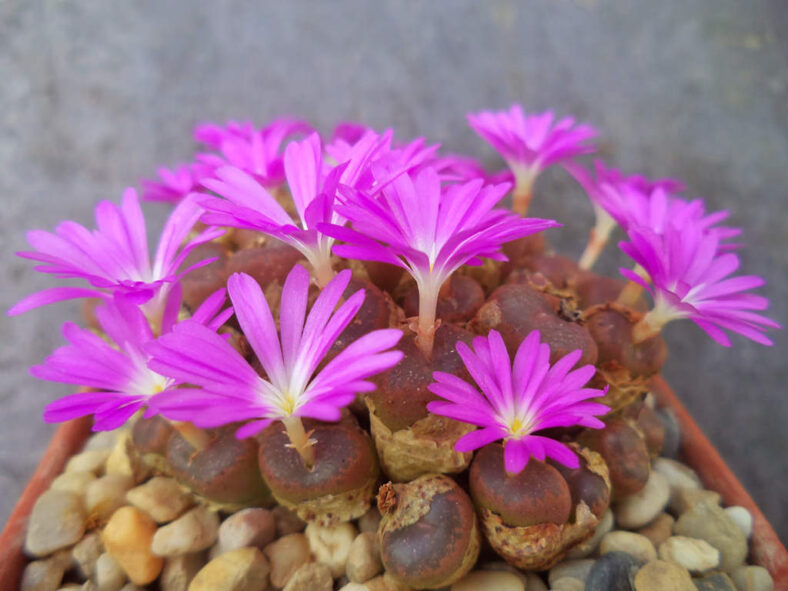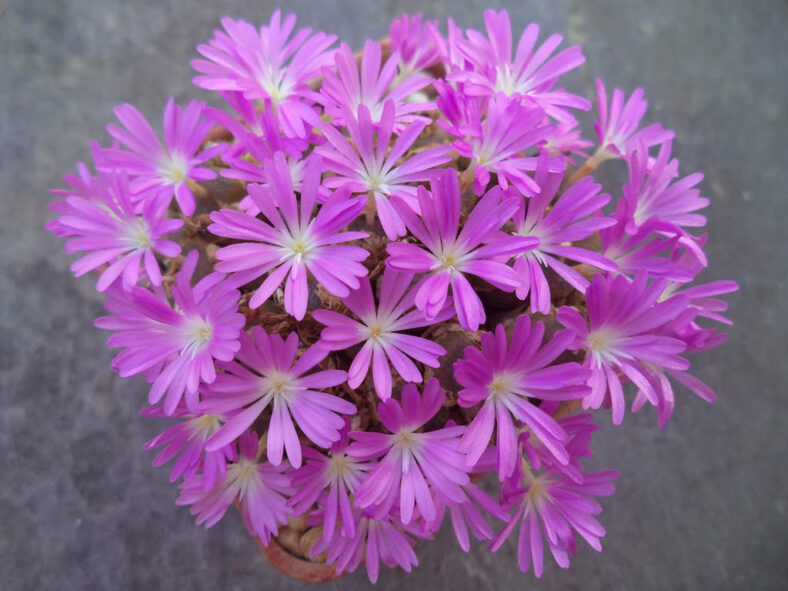Conophytum lithopsoides is a dwarf succulent with four subspecies endemic to the winter rainfall area of the Northern Cape province of South Africa. Among these, Conophytum lithopsoides subsp. lithopsoides is more widespread.
Scientific Name
Conophytum lithopsoides L.Bolus
Scientific Classification
Family: Aizoaceae
Subfamily: Ruschioideae
Tribe: Ruschieae
Genus: Conophytum
Etymology
The specific epithet "lithopsoides" (pronounced "ly-thops-OH-id-eez") means "resembling Lithops" and refers to the likeness of this species to the members of the genus Lithops.
Origin
Conophytum lithopsoides is native to South Africa. The subspecies Conophytum lithopsoides subsp. lithopsoides is restricted to the Namaqualand Hardeveld and Richtersveld bioregions of the Succulent Karoo biome. It grows on quartz gravel flats that are often small in extent and in small troughs or shaded crevices on quartz.
Description
Conophytum lithopsoides is a dwarf succulent that forms clumps of bodies consisting of two thick, fleshy leaves that are almost entirely fused. The clumps can reach a diameter of 3.2 inches (8 cm). The bodies are cylindrical, ranging from convex to slightly bilobate, with a window at the tip. They typically grow to a height of about 1 inch (2.5 cm) and can have a diameter of up to 0.4 inches (1 cm). The bodies vary in color from purplish-brown to bright chartreuse, often displaying a mottled pattern of opaque brownish spots, with occasional wart-like clusters of prominent cells.
In the fall, Conophytum lithopsoides produces long-tubed flowers with basally white, magenta-colored petals and filaments forming a ring of yellow to cinnabar. The flowers are diurnal, meaning they open during the daytime.

Subspecies of Conophytum lithopsoides
- Conophytum lithopsoides subsp. arturolfago
- Conophytum lithopsoides subsp. boreale
- Conophytum lithopsoides subsp. koubergense
- Conophytum lithopsoides subsp. lithopsoides
How to Grow and Care for Conophytum lithopsoides
Light: This plant thrives in bright light but should be protected from intense direct sunlight. To avoid sunburn, place it in an area that receives a few hours of full sun during the cooler parts of the day.
Soil: Conophytum lithopsoides requires porous soil that allows water to drain away quickly for optimum growth. You can use a commercial potting mix designed for succulents or make your own.
Temperature: This plant can tolerate high temperatures but is not frost-hardy. It is hardy in USDA Plant Hardiness Zones 10b-11b, which have average annual extreme minimum winter temperatures ranging from 35°F to 50°F (1.7°C to 10°C).
Watering: Conophytum lithopsoides requires little to no water during its dormancy from spring to summer. When it begins to grow again in the fall, it is safe to water it deeply. However, ensure that the soil dries out between waterings. If the leaves begin to wrinkle during the active growth, it may indicate that the plant needs additional water.
Fertilizing: This plant is a light feeder and does not need fertilizer if repotted every two years.
Repotting: The best time to repot this plant is at the beginning of the growing season; however, repotting can also be done at any point during active growth.
Propagation: Conophytum lithopsoides is usually propagated from seeds, but can also be easily propagated by division. The ideal time to divide the plant is before it starts to break dormancy or after flowering.
Learn more at How to Grow and Care for Conophytum.
Toxicity of Conophytum lithopsoides
Conophytum lithopsoides is considered non-toxic, making it safe to grow around children and pets.
Links
- Back to genus Conophytum
- Succupedia: Browse succulents by Scientific Name, Common Name, Genus, Family, USDA Hardiness Zone, Origin, or cacti by Genus
Photo Gallery
Click on a photo to see a larger version.


